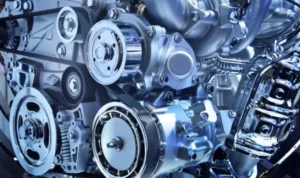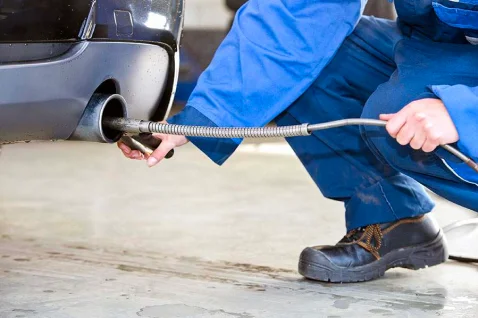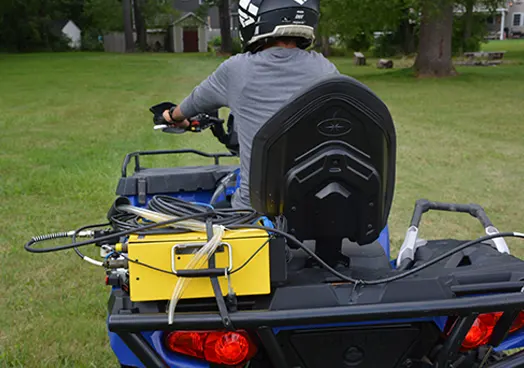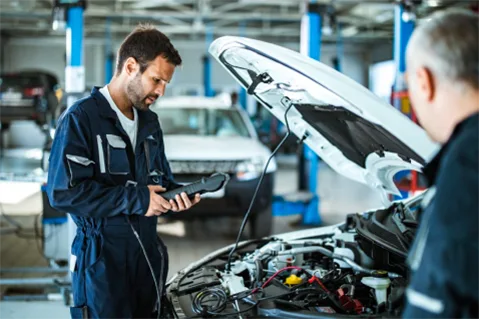
EPA Method 21 is a key procedure to detect volatile organic compound (VOC) leaks in industrial equipment. If you’re working in an industry involving chemicals, gas, or liquid emissions, you’ve likely heard of the Environmental Protection Agency’s (EPA) Method 21 procedures.
The procedure was established by the EPA to combat widespread noncompliance with leak detection and repair (LDAR) regulations. So, EPA Method 21 is kind of a big deal.
Besides the fact that VOC emissions pose a significant environmental and health risk to the public, if your business and manufacturing operation isn’t in compliance with EPA Method 21, you could face severe fines and penalties.
Wondering what EPA Method 21 is and how it can impact your company and/or operation? Our sustainability consulting experts are here to explore the ins and outs of EPA Method 21 to help you help our environment (and your wallet) avoid problems.
If you’re wondering what EPA Method 21 is and how it can help your industrial operation thrive, you’ve come to the right place. In this guide, we’ll discuss the following:
- What EPA Method 21 is and its connection to vehicle emissions
- Best practices for implementing EPA Method 21 in a manufacturing and industrial operation
- Common challenges associated with complying with EPA Method 21
- Essential facts about EPA Method 21
- How GlobalMRV can help with environmental sustainability for industrial operations
The connection between Method 21 and vehicle emissions

What is EPA Method 21? Per the Environmental Protection Agency (EPA), EPA Method 21 helps with the “determination of volatile chemical compound leaks.” Method 21 is used by certified inspectors to identify possible VOC leaks on process equipment sources.
Depending on the nature of the operation, equipment sources might include “valves, flanges, and other connections, pumps, compressors, pressure relief devices, process drains, open-ended valves, pump and compressor seal system degassing vents, accumulator vessel vents, agitator seals, and access door seals,” according to the California Air Resources Board.
EPA Method 21 isn’t meant to be used as a gauge for measuring mass emission rates as much as it is to detect leaks.
This critical procedure was established by the EPA for detecting volatile organic compound leaks in industrial equipment.
Equipment like automobiles, motorcycles, ATVs, heavy-duty vehicles, marine vessels, lawnmowers, and even light-duty equipment like chainsaws emit harmful emissions. Method 21 helps provide instrument-based and leak detection screening protocols for qualitative and quantitative data analysis for emissions output.
Best practices for implementing Method 21

As the EPA established Method 21 to help detect and repair leaks, the EPA created these procedures with certain best practices in mind. Managers and inspectors can follow best practices as they relate to the following categories to better ensure a cleaner, more sustainable industrial operation:
- Ensuring safety: To ensure a safer operation, the EPA recommends referring to the practices outlined in their handbooks. If nothing else, the EPA recommend developing a safety plan that’s customized to the equipment and hazardous materials used by the company.
- Assigning a VOC monitoring instrument: Companies following EPA Method 21 must employ a specialized VOC monitoring instrument and/or process. The instrument of choice will depend on the operation. Common types of instruments and detectors include catalytic oxidation, flame ionization, infrared absorption, and photoionization. The instrument must also be able to show an instrument meter scale that’s readable plus or minus 2.5% of the specified leak detection concentration.
- Identifying components: the EPA specifies that operators must identify all relevant components fall under EPA Method 21. Every part that’s subject to Method 21 must have a unique location and number assigned to it. Visual illustrations, diagrams, graphics, and tracking tags are used to help with leak detection and repair program compliance.
- Monitoring schedules: A company-established monitoring schedule must be created. The EPA mandates that each facility keep a detailed log of relevant readings recorded from portable VOC monitoring instruments.
Of course, following these best practices isn’t always simple. Challenges often arise; Let’s take a look at some of these challenges and ways to overcome them.
Compliance challenges with Method 21

Keeping on top of the Environmental Protection Agency’s regulatory procedures can be challenging.
The EPA has mentioned a few noncompliance issues that can be a challenge to adhere to. The most common challenge to adhere to is the failure to identify inventory components and units.
Businesses: if you’re operating out of a large facility that changes its infrastructure often, all units, components, and inventory parts often, they must be accounted for and tracked.
If parts aren’t properly tracked and accounted for, a potentially dangerous leak can occur.
Finally, Method 21 mentions that operations often place equipment on what the EPA calls the “Delay of Repair List.” This list should only be used when a team can’t maintain components without a process unit shutdown.
The “Delay of Repair List” should be used as a last resort. In other words, according to Method 21, all components must be serviced and monitored on a regular maintenance schedule.
Did you know?
Did you know that a simple check valve is an excellent example of a piece of equipment to investigate and reduce emissions? An engine or vehicle doesn’t have to go into a costly dynamometer but can be evaluated for tiny improvements.
With check-valve components expected to grow nearly 15.3% from 2024 until 2030 (VerifiedMarketResearch.com, 2024), having a trusty emissions monitoring system on hand can help you stay in better compliance with Method 21 for your real-driving vehicle emissions testing operation.
Table: 5 key facts about EPA Method 21
| 1. Method 21 was introduced in 1981 by the Environmental Protection Agency (EPA) to help industrial plants, manufacturers, and businesses. 2. Method 21 requires that industrial operators use a specialized volatile organic compound (VOC) analyzer to determine if leaks are present. 3. Method 21 isn’t meant to gauge the emissions rate of powerful greenhouse gases and VOCs. Portable emissions measurement systems — like Firefly — can help with this process. 4. Some of the requirements for an analyzer to be compliant with Method 21 include whether the analyzer is portable, contains a battery-powered sample pump, is safe, and has a sample probe of no larger than ¼-inch in diameter. 5. EPA Method 21 has 17 total sections, so operators should reserve dedicated time to review the documentation involved with the procedure. Method 21 can help industrial operations teams to better comply with the Clean Air Act (CAA). |
Have environmental sustainability concerns? GlobalMRV can help

Because every company uses different equipment, has a different methodology, and uses technology that’s specific to their company, following standard Method 21 protocols can sometimes be challenging.
What’s more, with most management teams and projects, new procedures are needed to keep tabs on greenhouse gas emissions and emissions outputs.
Need help tracking volatile organic compounds and creating a more efficient sustainability operation? We can help.
Since 1999, we’ve helped companies create cleaner, safer, and greener operations for emissions monitoring and reporting. Since 2018 alone, we’ve also collected and analyzed over 3,000 hours of reliable data and helped save OEMs and companies more than $5,000,000 on traditional dynamometer and real driving emissions (RDE) testing for clients of all different industries and niches.
If you have a specific project that you’d like to chat about, our team of Ph.D. researchers, managers, analysts, engineers, and technicians can help. Contact us today for immediate support with your emissions operation.
Let’s build a brighter tomorrow today.